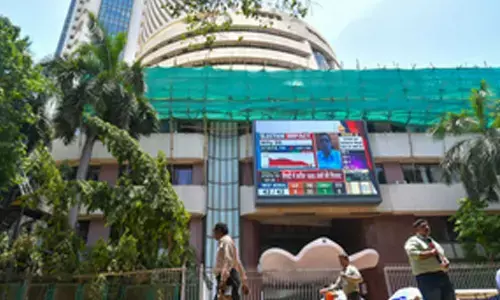Wake-up call on climate changes

Wake-up call on climate changes, Recently UN-backed Intergovernmental Panel on Climate Change (IPCC) clearly opined that extreme change in climate is product human activity.
 Recently UN-backed Intergovernmental Panel on Climate Change (IPCC) clearly opined that extreme change in climate is product human activity. It vouched for 95% probability of human interference for the climatic changes. Whereas in its first assessment in 1990, it mildly hinted at increase in air temperature to be reason for natural variability, in its current fifth assessment scientists are certain that climate change is man-made.
Recently UN-backed Intergovernmental Panel on Climate Change (IPCC) clearly opined that extreme change in climate is product human activity. It vouched for 95% probability of human interference for the climatic changes. Whereas in its first assessment in 1990, it mildly hinted at increase in air temperature to be reason for natural variability, in its current fifth assessment scientists are certain that climate change is man-made.
In fact many factors influence the climate but levels of Carbon Dioxide (CO2) are more detrimental, as it constantly absorbs infra-red heat at a higher rate than nitrogen and oxygen. As the levels of CO2 increases, atmosphere tends to warm up. At the start of Industrial Revolution in 1880, the levels of CO2 were 280 ppm (parts per million) now the concentration has exceeded 400 ppm.
Apart from CO2, black and suspended particulates like aerosols have amplified the affects of CO2. If the levels of CO2 double from those in 1880, global temperature would increase by 1C, bringing about a drastic change in climate.
Revelations of the report are alarming: average surface temperature has already increased by 0.85 C over the period of 1880 to 2012; existing levels of three green house gases, CO2, methane and nitrous oxide, are highest in the last 800,000 years; Global sea level rose by 19 cm from 1901 to 2010.
The period of 1983-2012 was the warmest 30 year period in the last 1400 years. The acidity of ocean surface has risen by 26% since the industrial revolution. This greatly impacted the Arctic Circle whose glaciers are shrinking by over 4% every year. Antarctica and Greenland too are experiencing a serious depletion of ice mass. Marine life is slowly moving to poles for cooler waters. Though the impact of climate change on human health couldn’t be detected, there has been sharp decline in yields of maize and wheat. Rice, soybeans and other staple grains were not affected.
To sum up, the IPCC recommended total phase-out of fossil fuels in power generation by 2100 and to reduce their use by 20% by 2050 to avoid calamitous consequences of climate change. Predictably, these recommendations have been rejected by the representatives of Saudi Arabia and other oil exporting countries.
Unlike other phenomenon, climate has a long response time. Actions taken now will have an impact a decade later. The consequence of the present change has been the result of the accumulations of the Green House gases over a period of time. The report has low confidence in stating that frequency and size of the floods are influenced by climate change for lack of proper records of the severe weather events in the past. India has been placed the top 20 nations at the risk of the potential climate change. India with its 7,500-km coastline can ill-afford to bear the brunt. Nearly 58% of the population of India depend directly on agriculture, fisheries, poultry and other allied activities. A minimal disturbance in climate can topple their livelihoods. The most recent extreme weather conditions in form of tropical cyclones, cloud bursts and severe down pours made a severe dent on the Indian economy.
India is now seriously contemplating the strategic shift in talks for the upcoming global meet at Paris and mulls over delinking India’s position from China. China is currently the highest carbon emitter and falls in the same league as the developed nations. It attributes the carbon emissions to production activities related to exports. The bold stance is aimed at protecting nation’s interests while pursuing a pro-active role during negotiations.
India refuses to yield to predicament of developed countries that shifted the onus for reduction of emissions to developing countries. India is intent on climate discussions in the upcoming G-20 summit despite serious reservations by China. Though India would take stand of the BASIC group (Brazil, Australia, South Africa, India and China) on broader issues, it might take a different stand on specific issues which may affect its economic interests. It is time that India took a clear position ahead of the Lima talks where it will insist on adaptation rather than mitigation (emission cut).








![How Untreated Varicose Veins Can Lead to Leg Ulcers, Clots, and Skin Damage] How Untreated Varicose Veins Can Lead to Leg Ulcers, Clots, and Skin Damage]](https://assets.thehansindia.com/h-upload/2025/12/18/500x300_1610045-rgs.webp)











